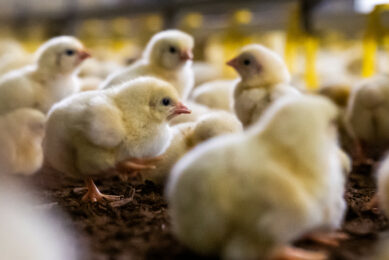Diatoms in animal feeds
With the global tendency to promote “green” products and ban antibiotics as well as other non-friendly chemical substances, the world is continuously looking at organic alternatives that may be equally effective to prevent increased costs and maintain similar livestock production.
What are diatoms?
One such a mysterious and not commonly known organic substance, Diatoms, coming from Diatomaceous earth, is mined in many parts of the world. In South Africa it is mined from seven different fresh water sources.
Diatoms have been recognized long time ago as an organic product for animal health and nutrition. It is a naturally occurring, silicon rich sedimentary rock made up of fossilized remains of millions of diatoms, a type of hard-shelled plant algae originally deposited millions of years ago in the earth from dried up seas and lakes. Once Diatomaceous earth is mined, it can be milled or processed into a myriad of types for an even greater variety of uses.
Important for livestock production is to use food grade Diatomaceous earth of sufficient purity and free from clays and that is produced from natural freshwater sources.
Diatoms used in livestock and poultry are primarily amorphous silica (>86% silicon), and is not a health hazard. The Nobel Prize winner for chemistry, Professor Adolf Butenant proved that life cannot exist without Silica. At the same time Dr. Barbara Hendel stated that "Silica is the most important trace mineral for human health!"
Diatoms in livestock and poultry production
Food grade Diatom users until now have reported four distinct uses in livestock and poultry production, namely insect and parasite control, mineralization, deodorization/absorption, and grain protection.
At this stage one must admit that each use for Diatoms has its own folklore, facts and fiction associated with it. Many uses are strictly reports of what people have done with the food grade Diatoms.
More proper scientific work is therefore required to confirm the many positive testimonies and some peer reviewed work that already exists to give this product its rightful place in more effective and competitive “green” livestock food production practises.
Dose response studies are required with the focus on animal performance and health improvement, rumen buffering capacity, digestive improvement, and parasite and fly control.
At the same time it must also be determined whether Diatoms can either replace, or works in synergism, with growth promoting antimicrobials and antibiotics in livestock and poultry.
Parasite and insect control
It is true, that when used under the correct conditions, almost any chemical substance is ‘safe’, but when used under the wrong conditions many insecticides can be a threat to health and/or the environment. The biggest driving force in the development of new insecticides has been the desire to replace toxic insecticides with “green products” to minimize the negative effects on the ecology in wilderness areas.
Diatoms have been used for at least two decades as a natural de-wormer for animals to get rid of unwanted parasites, worms, etc. Regardless of the method of operation not fully defined yet, farmers report definite control. More scientific evidence is required though to prove the different theories that exist in how it operates.
Mineralization
Feeding Diatoms to even healthy poultry or livestock often shows gains in production. This gain could probably be attributed to any single or combination of factors. However, the properties it contains in improving the absorption of other minerals and trace minerals, in particular the effect of silicon on improved overall mineralization (e.g. bone) as scientific studies have clearly proven, could be a good reason for some of the enhanced performance.
Deodorization/Absorption
Since deodorizing and absorption are natural functions of Diatoms they can be added as another major farm use benefit. Two functions will continue to happen as undigested Diatoms pass through with manure.
Reduced fly hatching is usually observed in manure from livestock fed Diatoms. There is no reason why it will not be very effective in the bedding of broiler and free range layer chickens.
Evidence also shows that it binds NH3 very effectively, which will have beneficial health effects and is a reason for the product being such a good odour reducer in most intensive farming operations.
Each individual Diatom shell also has a strong negative charge. Because of the strong charge it acts as a magnet. Each shell can absorb a large number of positively charged and other unwanted substances, irrespective of whether they may be chemical or in the form of bacteria or viruses.
Diatoms therefore may perhaps be an effective replacer for antibiotic and antimicrobial products commonly used to perform these functions. Recent work also indicated that Escherichia coli, Staphylococcus aureus and Pseudomonas aeruginosa were inactivated by Diatoms 86.8%, 46.7% and 94.5% respectively after only 20 minutes.
The absorption characteristics may probably be one of the most important traits Diatoms could have. Too little peer reviewed work unfortunately still exists, which makes this specific trait one of the key areas that must be researched.











